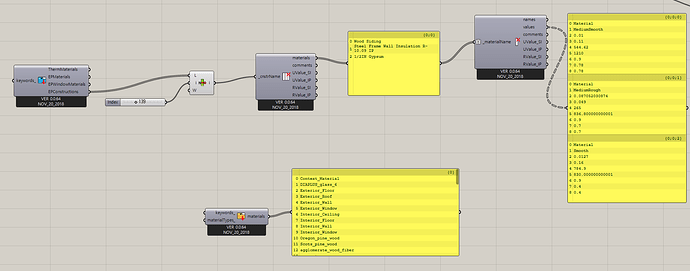Hello , Im Interior Archtecture Student now . And new at daylighting, energy simulation using honeybee.
First, Really appreciate for this wonderful program, honeybee.
It is very awesome for me!! ![]()
![]()
And I have some several question about honeybee’s simulation.
1. Is there any relationship between RAD Material and EP Material?
I want to simulate Energy(annual Energy Consumption) , Daylighting(UDI) at the same time to check the difference of using different interior finishing material. So I combine the simulation process in grasshopper! But Actually there was no effect in Energy simulation result , when I changed RAD Material. And no effect in UDI result too, when I changed EP Construction’s EP Material.
I thought there was difference between RAD and EP by their constitution of value.
But I really need the relationship RAD and EP. So I want to test SAME INTERIOR FINISHING MATERIAL to simulate Energy , Daylighting at the same time.
I want to check the result of UDI , Energy Consumption when I changed only interior Material.
1-1.
If there is no relationship between these material, how can I get useful result?
there is a small,rough finishing Materials in EP Material (except insulation material) like 1/2IN GYPSUM , 1 IN STUCCO , 8 IN CONCRETE HW , and there is specific material name in RAD Material like Oak wood , Grain wood ,etc(I downloaded them here http://www.artifice.com/radiance/rad_materials.html).
Can I get some useful result when I set EP Material (I mean Interior finishing material) like G05 25MM WOOD and use different kinds of wood material in RAD Material?
1-2
If the method above I said was not good way to get useful result, could you please tell me something useful way to solve this problem?
2. How can I get material’s texture (like bump image) that I using in simulation ?
I found .pic file in rad material library. But there is so small example in there.
I want to get various material’s texture information… How can I get?
Again, really thank you for this wonderful program.![]()

